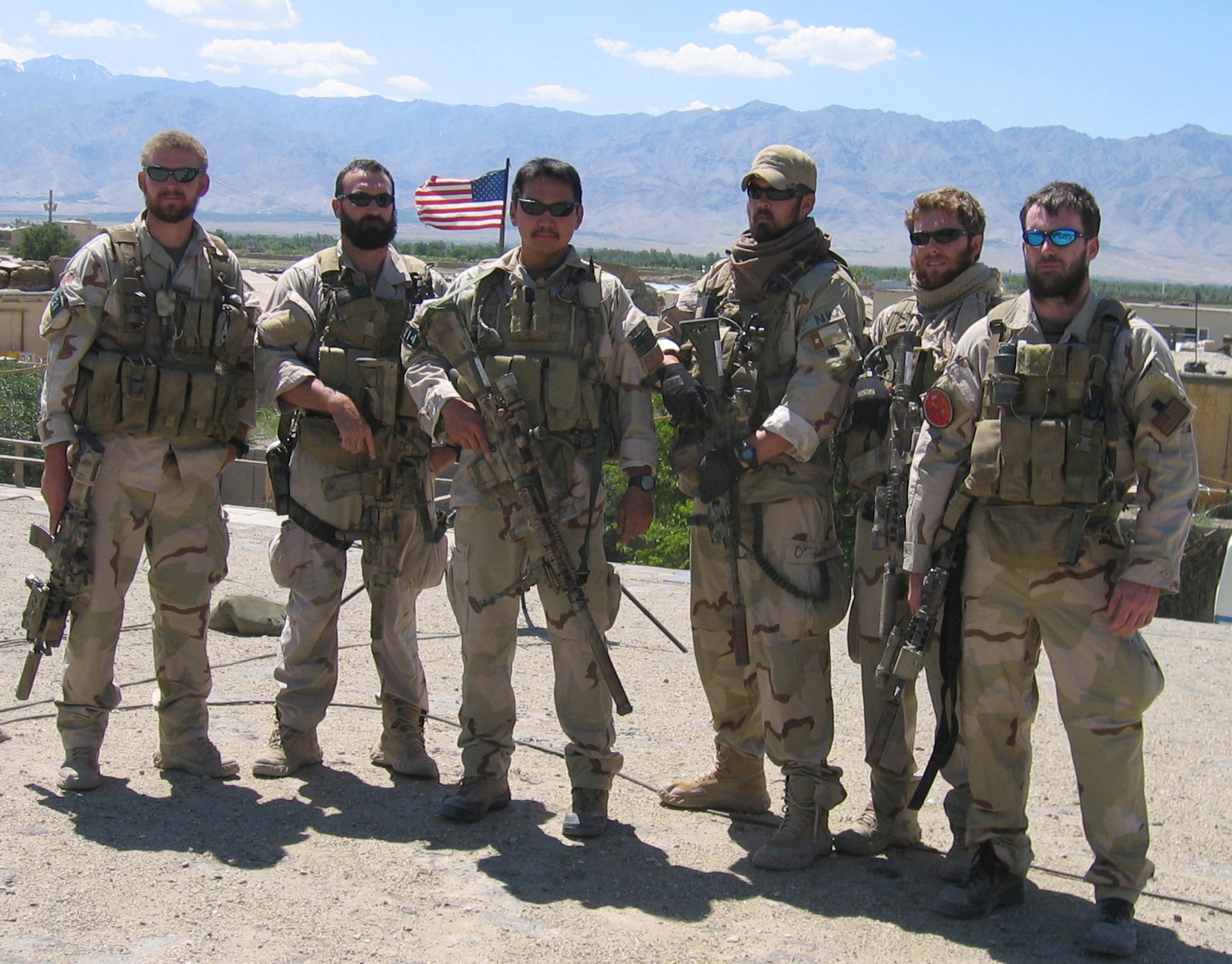United States Navy file photo of Navy SEALs operating in Afghanistan in support of Operation Enduring Freedom. From left to right, Sonar Technician (Surface) 2nd Class Matthew G. Axelson, of Cupertino, Calif; Senior Chief Information Systems Technician Daniel R. Healy, of Exeter, N.H.; Quartermaster 2nd Class James Suh, of Deerfield Beach, Fla.; Hospital Corpsman 2nd Class Marcus Luttrell; Machinist’s Mate 2nd Class Shane Patton, of Boulder City, Nev.; and Lt. Michael P. Murphy, of Patchogue, N.Y. With the exception of Luttrell, all were killed June 28, 2005, by enemy forces while supporting Operation Red Wings. U.S. Navy photo (RELEASED)
Operation Red Wings was a joint military mission carried out by U.S. forces in late June 2005 in the treacherous terrain of Kunar Province, eastern Afghanistan. Its primary objective was to disrupt anti-coalition militia activity in the region, with a specific focus on eliminating a Taliban-aligned insurgent leader named Ahmad Shah. What began as a covert reconnaissance mission by a four-man Navy SEAL team would soon become one of the most tragic and heroic episodes in the history of U.S. Naval Special Warfare.
The operation was conceived by the 2nd Battalion, 3rd Marines as part of a broader counterinsurgency campaign aimed at stabilizing the region ahead of Afghanistan’s September 2005 parliamentary elections. Intelligence reports had identified Ahmad Shah—also known as Muhammad Ismail—as a key figure responsible for orchestrating attacks against coalition forces. Shah led a guerrilla group known as the “Mountain Tigers,” operating in the volatile borderlands near Pakistan and enjoying support from Taliban elements.
Planning for Operation Red Wings began in early 2005. On June 27, 2005, a four-man Navy SEAL reconnaissance team was inserted via MH-47 Chinook helicopter into the Sawtalo Sar mountain area under the cover of darkness. The team consisted of Lt. Michael P. Murphy (team leader), HM1 Marcus Luttrell (medic), STG2 Matthew Axelson (sniper), and GM2 Danny Dietz (communications). Their mission was to locate and observe Ahmad Shah’s position and movements in preparation for a larger assault.
The following day, June 28, the SEAL team was discovered by local goat herders. After detaining the civilians, the team made the difficult decision to release them, adhering to the rules of engagement and moral considerations. It is believed that the herders alerted Taliban forces shortly after. Within hours, the SEALs were ambushed by a large contingent of insurgents—estimated to number between 50 and over 100 fighters. Despite being vastly outnumbered and outgunned, the SEALs fought with extraordinary bravery. Lt. Murphy, in a selfless act of heroism, exposed himself to enemy fire to make a satellite phone call for reinforcements. He was mortally wounded during the call and was later posthumously awarded the Medal of Honor.
In response to Murphy’s call, a Quick Reaction Force (QRF) composed of eight Navy SEALs and eight Army Night Stalkers from the 160th Special Operations Aviation Regiment was dispatched aboard an MH-47 Chinook. As the helicopter approached the landing zone, it was struck by a rocket-propelled grenade (RPG), causing it to explode midair and crash into the mountainside. All 16 personnel aboard were killed instantly, marking the single deadliest day for U.S. Navy SEALs up to that point.
From June 29 to July 2, Marcus Luttrell, the lone surviving member of the original SEAL team, evaded capture despite severe injuries. He was eventually found and sheltered by local Afghan villagers who followed the tribal code of Pashtunwali, which obligates them to protect guests at all costs. These villagers risked their lives to keep Luttrell safe from Taliban forces until he was rescued by U.S. troops.
In the wake of the tragedy, U.S. forces launched a follow-on mission in mid-July 2005 known as Operation Whalers. This operation successfully disrupted Ahmad Shah’s network, inflicted significant losses on his fighters, and forced him to flee into Pakistan. Though Shah would later resurface, his influence in the region was significantly diminished.
Operation Red Wings claimed the lives of 19 American servicemen and left an indelible mark on the U.S. military and the nation. Marcus Luttrell later recounted the mission in his memoir, Lone Survivor, which became a bestseller and was adapted into a 2013 film starring Mark Wahlberg. The story has since become a symbol of courage, sacrifice, and the unbreakable bond among special operations forces.
The fallen are honored annually through memorial events, scholarships, and foundations such as the Operation Red Wings Foundation, Special Operations Warrior Foundation and the Team Never Quit Foundation. Their legacy endures in the ethos of the Navy SEALs and in the hearts of those who continue to serve.
Operation Red Wings is more than a military mission. It’s a story of heroism under fire, of moral courage in the face of impossible choices, and of a brotherhood that endures beyond the battlefield. It remains a defining moment in the Global War on Terror and a solemn reminder of the cost of freedom.
Resources
Operation Red Wings Foundation
orwfoundation.org
Special Operations Warrior Foundation
specialops.org
Team Never Quit Foundation
teamneverquit.com
